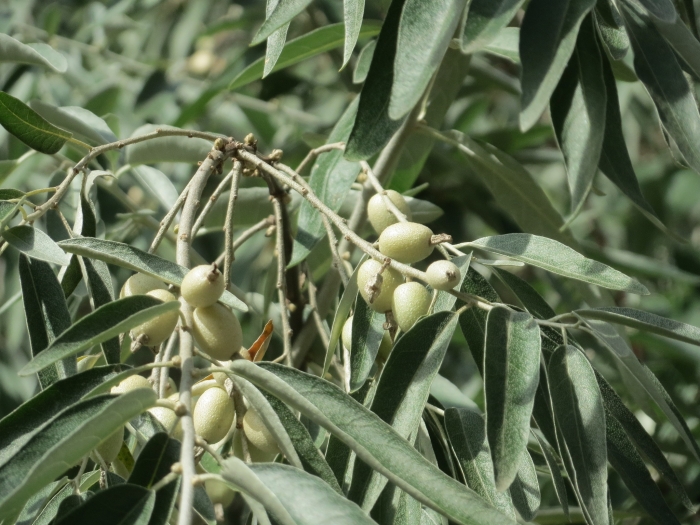Russian Olive
(Elaeagnus angustifolia)
Russian Olive (Elaeagnus angustifolia)
/
/

Andreas Rockstein
CC BY-SA 4.0
















































Estimated Native Range
Summary
Russian Olive is valued for its drought tolerance, ability to thrive in poor soils, and its use as a windbreak or for erosion control. It is often used in restoration projects, particularly in disturbed areas. However, it requires full sun to part shade, well-drained soils, and moderate water. While it can be a beautiful ornamental plant, it is considered invasive in many regions outside its native range due to its prolific seed production and rapid growth, which can displace native vegetation. Gardeners should be cautious and check local regulations before planting.CC BY-SA 4.0
Plant Description
- Plant Type: Shrubs, Trees
- Height: 12-30 feet
- Width: 12-20 feet
- Growth Rate: Rapid
- Flower Color: N/A
- Flowering Season: Spring
- Leaf Retention: Deciduous
Growth Requirements
- Sun: Full Sun, Part Shade
- Water: Medium
- Drainage: Fast, Medium
Common Uses
Bird Garden, Drought Tolerant, Edible*Disclaimer: Easyscape's listed plant edibility is for informational use. Always verify the safety and proper identification of any plant before consumption., Erosion Control, Low Maintenance
Natural Habitat
Riparian zones, floodplains, and areas with ample water in western and central Asia
Other Names
Common Names: Silverberry , Russian Silverberry , Persian Olive , Oleaster
Scientific Names: Elaeagnus angustifolia , Elaeagnus angustifolia f. culta , Elaeagnus angustifolia subsp. orientalis , Elaeagnus angustifolia var. angustifolia , Elaeagnus angustifolia var. biebersteiniana , Elaeagnus angustifolia var. caspica , Elaeagnus angustifolia var. normalis , Elaeagnus angustifolia var. orientalis , Elaeagnus angustifolia var. orientalis , Elaeagnus angustifolia var. spinosa
GBIF Accepted Name: